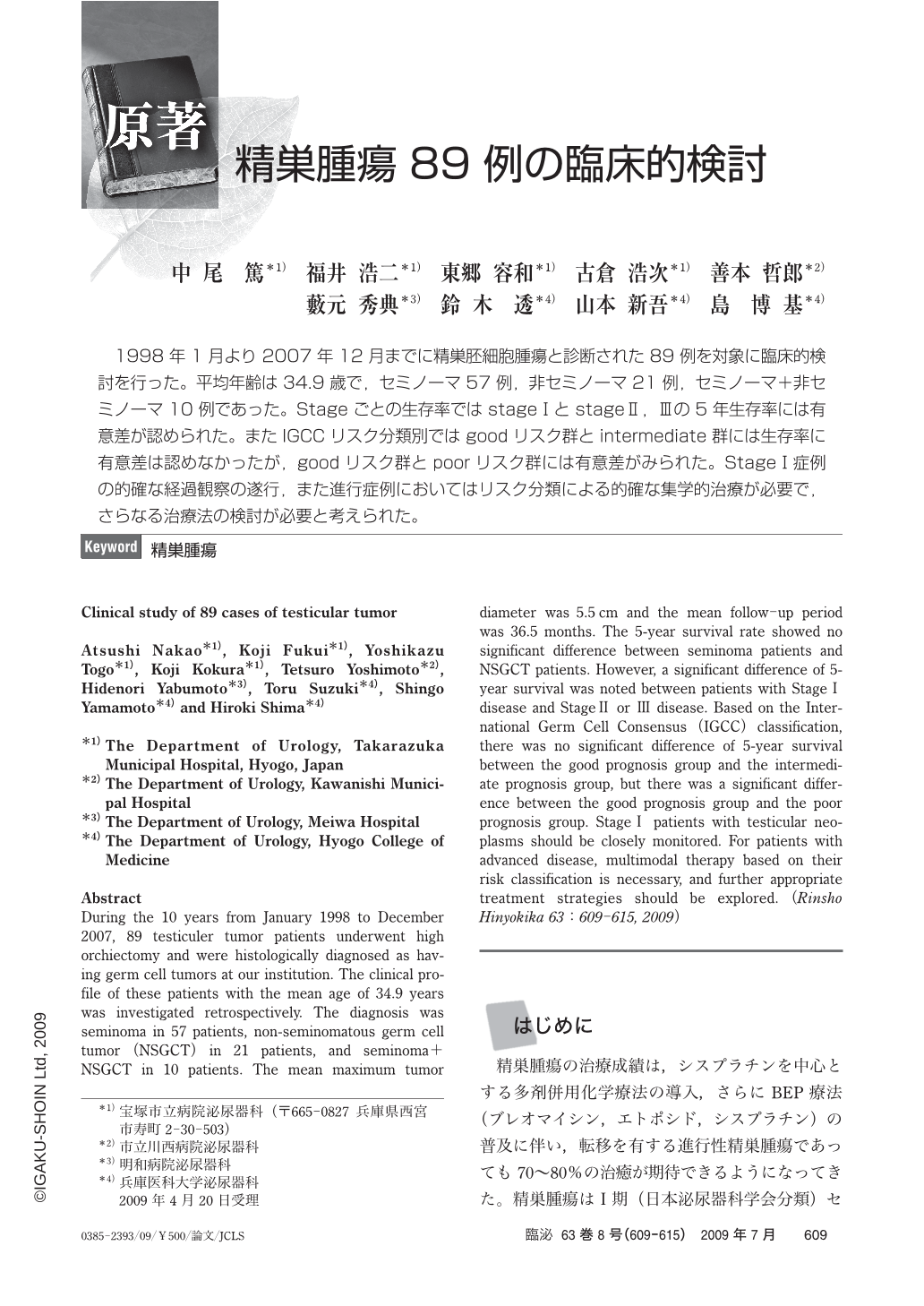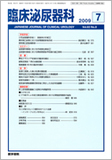Japanese
English
- 有料閲覧
- Abstract 文献概要
- 1ページ目 Look Inside
- 参考文献 Reference
1998年1月より2007年12月までに精巣胚細胞腫瘍と診断された89例を対象に臨床的検討を行った。平均年齢は34.9歳で,セミノーマ57例,非セミノーマ21例,セミノーマ+非セミノーマ10例であった。Stageごとの生存率ではstage Ⅰとstage Ⅱ,Ⅲの5年生存率には有意差が認められた。またIGCCリスク分類別ではgoodリスク群とintermediate群には生存率に有意差は認めなかったが,goodリスク群とpoorリスク群には有意差がみられた。Stage Ⅰ症例の的確な経過観察の遂行,また進行症例においてはリスク分類による的確な集学的治療が必要で,さらなる治療法の検討が必要と考えられた。
During the 10 years from January 1998 to December 2007,89 testiculer tumor patients underwent high orchiectomy and were histologically diagnosed as having germ cell tumors at our institution. The clinical profile of these patients with the mean age of 34.9 years was investigated retrospectively. The diagnosis was seminoma in 57 patients,non-seminomatous germ cell tumor(NSGCT)in 21 patients,and seminoma+NSGCT in 10 patients. The mean maximum tumor diameter was 5.5 cm and the mean follow-up period was 36.5 months. The 5-year survival rate showed no significant difference between seminoma patients and NSGCT patients. However,a significant difference of 5-year survival was noted between patients with Stage Ⅰ disease and Stage Ⅱ or Ⅲ disease. Based on the International Germ Cell Consensus(IGCC)classification,there was no significant difference of 5-year survival between the good prognosis group and the intermediate prognosis group,but there was a significant difference between the good prognosis group and the poor prognosis group. Stage Ⅰ patients with testicular neoplasms should be closely monitored. For patients with advanced disease,multimodal therapy based on their risk classification is necessary,and further appropriate treatment strategies should be explored.

Copyright © 2009, Igaku-Shoin Ltd. All rights reserved.


